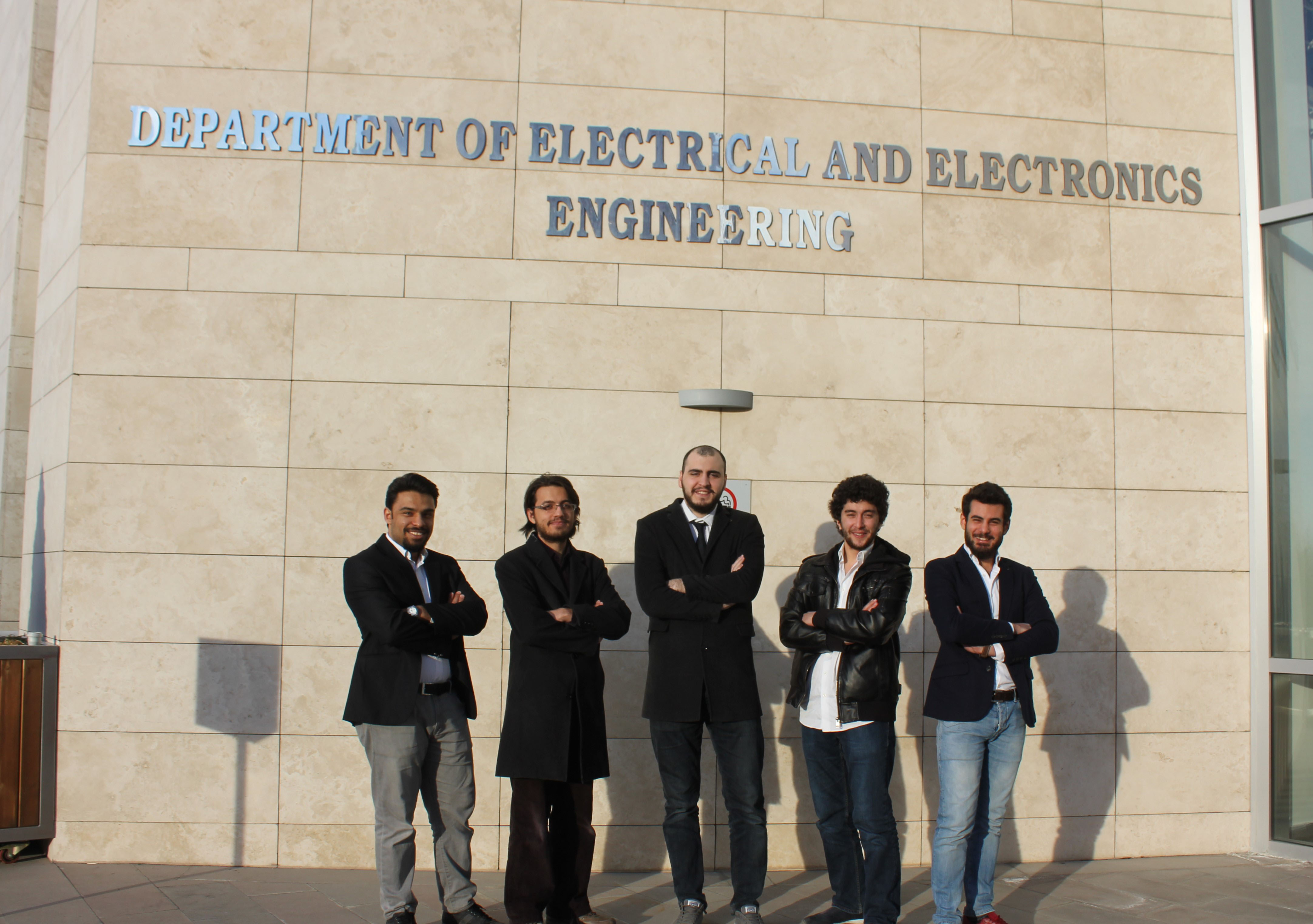Pi-Eye
< Projeler Sayfası
Proje Adı
Yörüngede Yaklaşma ve Kenetlenme Benzetim Ortamı
Şirket Adı
TUSAŞ-Türk Havacılık ve Uzay Sanayii A.Ş.
Şirket Mentoru
Burak Akbulut
Akademik Mentor
Prof. Dr. Ömer Morgül
Asistan
Dilan Öztürk
Takım Üyeleri
Furkan Alan, Yunus Erdem Aras, Muhammed Selahaddin Harmankaya, Mahmut Can Soydan, Mustafa Numan Uyar

Özet
Bu çalışmada otonom uydu yanaşma uygulamalarında kullanılmak üzere stereo kamera sistemi kullanan yazılım ve donanım geliştirilmesi ve bu sistemin sürtünmesiz uzay ortamının “omniwheel” robotlarla benzetimiyle test edilmesi amaçlanmaktadır. Sensör sistemi belirli yazılımsal ve donanımsal hedeflere uygun olarak tasarlanmış olup, sistem çıktı olarak şekli ve boyutu bilinen hedefin pozisyonunu, yönelimini, lineer hızını ve açısal hızını göreceli olarak tespit edebilecek şekilde tasarlanmıştır. Tespit sistemi hedefin üzerindeki belirli referans işaretlerine ve hedeften çeşitli algoritmalarla elde edilen ayırt edici özellik noktalarına dayanmaktadır. Hedef bulunduğu uzaklığa bağlı olarak stereo kamera sistemi veya tek kameralı sistemle tespit edildikten sonra, hedefin pozisyonunu ve yönelimini belirlemek için ters katı vücut dönüşümü (reverse rigid body transformation) algoritması, hedefin takibi, hız bilgilerinin eldesi ve pozisyon ve yönelim tahminlerinin geliştirilmesi için Lineer Kalman filtresi kullanılmaktadır. Ayrıca hedefe verimli bir yol takip ederek yaklaşmak için yol belirleme algoritması geliştirilmiş ve önerilmiştir.
Abstract
In this study, a stereo vision sensor system hardware and an algorithm are developed to be utilized in autonomous satellite rendezvous applications. A two dimensional representative environment is also being developed consisting of omni wheel robots to test breadboard model of the sensor system in a similar proximity operation scenario. The sensor hardware is designed according to predefined requirements keeping the limitations of the satellites. The sensor is able to estimate position, orientation, linear and angular velocity of a target object whose shape and sizes are known a priori. The detection system relies on specific reference markers on the target and extracted feature points. Both of stereo and monocular vision approaches are used to detect object and estimate its distance, followed by reverse rigid body transformation to estimate the target’s 3D location and orientation. Linear Kalman Filter is used for tracking the target object, estimating linear and angular velocities and improving position and orientation estimations. Additionally, a path-planning algorithm is developed to approach target object in an efficient way


